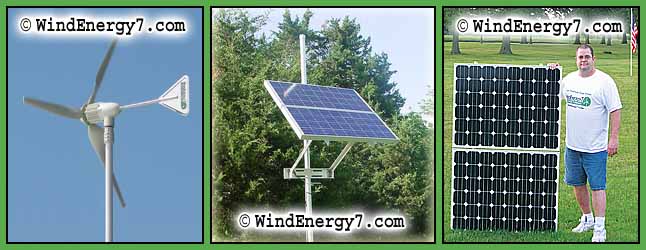>> was slow going because it's my first install but the posts I've read and
>> the manual information was good enough for my electrician and me to
>> figure it all out. I must say I am really pleased with the content I have
>> read on the forum posts here. I have been just browsing post after
>> post and have learned everything I need to know from you here. With
>> one exception. The Wind Solar Turbine/Charge Controller and how to
>> understand its status lights. That's what's missing.
>> So I am asking you to post some detail for me on that and clarify it for
>> me and I think you should add that to the manual contents. That's it,
>> please email me when you have time to answer this issue.
>> Thanks, Mike
Hello Mike,
Wow, nice job on your install and you did that with hardly any phone support required, excellent job. Sorry I haven't had time to post your pictures yet, maybe next weekend I will have the time. OK, here's a picture of the wind Turbine/Charge Controller. Have a look to reacquaint yourself with what you are seeing. Then below the image I will comment about each status light from left to right.


On/Stop Switch:
This switch turns the turbine on/off and short circuits and stops the wind generator.
Battery Status Lights:
As you can sort of decipher from the icons, this light tells you when battery is charged, charging, and low. Green = Battery Full, Flashing Green = Battery Charging
Wind/Solar Indicator:
The small icon on the top indicates a flag in high wind, that's Wind, the little icon below is the Sun. So, Flashing Green = Wind Charging, Flashing Red = Sun Charging
Dump Load Status:
The small icon is for a heating element, this is the dump load. When your batteries are full, and the system begins to hit a level high enough to overcharge your batteries, this light will turn red. Red = Dump Load Releasing Heat, thus batteries are at full charge and you are charging more than you can store or use at this point.
If you have any additional questions about the Turbine/Charge Controller, just email me or post them up and I will answer them as soon as possible. I will also add this to the manual now and fine tune it later.
Anyone wanting a home turbine system, fill out the contact form and I can call you back and consult with you first. I can take credit card by phone to make it easier. There are still areas open for new dealers. So, if you are interested in becoming a dealer fill out the same form and we can see if your area may still be open. Territories are still open but being taken up from Hawaii to Massachusetts now and I have established two dealers in Canada.
Related Article Post:
Solar Panel Wiring and Turbine/Charge Controller Voltage
Twin Turbine Rooftop Wind Turbines, Michigan
Illinois One Turbine Wind/Solar Hybrid With Tower
Oklahoma Install, One Turbine Wind Only Rooftop Wind Turbine
Small Wind Turbine Kit, Installed in Oklahoma
Rooftop Wind Turbine Kit Install, Indiana
.
--
turbineZ



